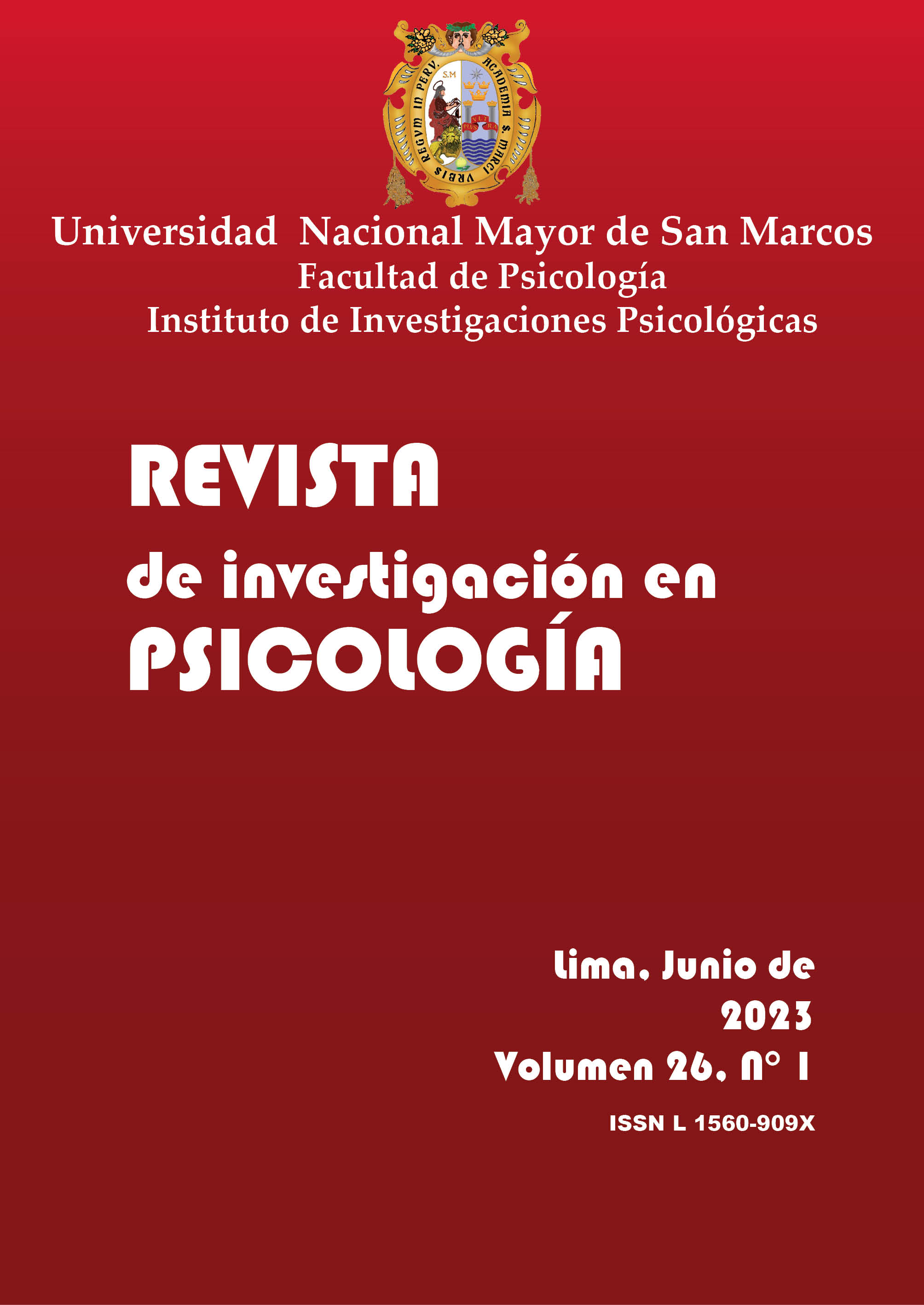Coping with stress as a predictor of post-traumatic growth in a Peruvian population during COVID-19
DOI:
https://doi.org/10.15381/rinvp.v26i1.24484Keywords:
Post-traumatic growth, coping with stress, Coping strategy, coping styles, predictor, COVID-19Abstract
Background. The Peruvian population during Covid-19 has been exposed to stressful and traumatic events, associated with close experiences with suffering and death; but these experiences have also generated positive psychological growth. The objective was to develop a model of structural equations to determine if coping with stress is a predictor of post-traumatic growth in a Peruvian population. Method. The design was predictive cross-sectional. 310 people participated, 58 % men and 42 % women, aged 18 to 63 years (M=31.6). The COPE-28 Spanish version (Morán et al., 2010) and the Postraumatic Growth Inventory PTGI (Tedeschi & Calhoun, 1996), adapted by Ramos-Vera et al (2021). Results. In the first model, the coping strategies religion (β=.209, p<.01), self-distraction (β=.111, p<.01) and disconnection (β=-.147, p<.05) are significant predictors and explain 14.9 % of post-traumatic growth; likewise, in the second model, spiritual coping styles (β=.209, p<.01), social support (β=.172, p<.05) and cognitive (β=.164, p<.05) are important predictors that explain 14.7 % of post-traumatic growth. Conclusions. The best predictor of growth is religious coping followed by distraction and disconnection. Also, spiritual coping styles, social support, and cognitive support are important predictors.
Downloads
Published
Issue
Section
License
Copyright (c) 2023 Neicer J. Delgado Requejo, Lourdes C. Cerda Sánchez, Julio C. Castillo Ramos

This work is licensed under a Creative Commons Attribution 4.0 International License.
THE AUTHORS RETAIN THEIR RIGHTS:
a. The authors retain their trademark and patent rights, and also on any process or procedure described in the article.
b. The authors retain the right to share, copy, distribute, execute and publicly communicate the article published in the Journal of Research in Psychology (for example, place it in an institutional repository or publish it in a book), with acknowledgment of its initial publication in the Journal of Research in Psychology.
c. Authors retain the right to make a subsequent publication of their work, to use the article or any part of it (for example: a compilation of their work, lecture notes, thesis, or for a book), provided that they indicate the source. of publication (authors of the work, magazine, volume, number and date).






